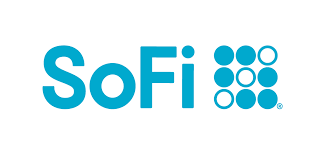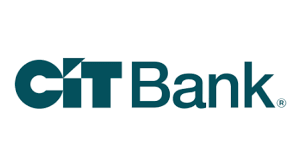Anyone who's missed a credit card payment knows how alarming it can be once you realize it. You start thinking about how much this will cost you in late fees, and more importantly, what kind of a hit your credit score will take.
It's understandable to feel this way, especially when your payment history accounts for about 35% of your FICO® Score. No one wants an honest mistake to tank their credit. But before you worry, you should know exactly how late credit card payments work and whether your payment will even be reported as late.
What's considered a late credit card payment?
This would make a good trick question on a test. While the obvious answer is "any credit card payment made after the due date," that's not how the credit bureau sees it.
Your card issuer can't report your payment as late to any of the three credit bureaus until it's at least 30 days past the due date. That's because all those credit bureaus use the Metro 2 Reporting Format, which requires that creditors follow the Industry Standard for Reporting Account Delinquency. Here's how it works.
On the reporting date, your card issuer sends a status code about your account to each credit bureau that it reports to (all creditors don't necessarily report to all three big credit reporting agencies). That code indicates your account's current standing. Accounts from zero to 29 days past due are a Code 11, the code for current accounts. The codes for reporting late payments start with accounts that are 30 to 59 days past due.
This doesn't mean it's a bright idea to take your time with your credit card payments. Your card issuer still can charge a late fee as soon as you miss the due date, and you'll also have to pay interest on the amount due. You might also get hit with an interest rate hike.
Compare savings rates
Make sure you're getting the best account for you by comparing savings rates and promotions. Here are some of our favorite high-yield savings accounts to consider.
| Account | APY | Promotion | Next Steps |
|---|---|---|---|

Open Account for SoFi Checking and Savings
On SoFi's Secure Website.
Rating image, 4.50 out of 5 stars.
4.50/5
Our ratings are based on a 5 star scale.
5 stars equals Best.
4 stars equals Excellent.
3 stars equals Good.
2 stars equals Fair.
1 star equals Poor.
We want your money to work harder for you. Which is why our ratings are biased toward offers that deliver versatility while cutting out-of-pocket costs.
|
up to 3.80%²
Rate info
You can earn the maximum APY by having Direct Deposit (no minimum amount required) or by making $5,000 or more in Qualifying Deposits every 30 days. See SoFi Checking and Savings rate sheet at: https://www.sofi.com/legal/banking-rate-sheet.
Min. to earn: $0
|
New customers can earn up to a $300 bonus with qualifying direct deposits!¹
|
Open Account for SoFi Checking and Savings
On SoFi's Secure Website. |

Open Account for CIT Platinum Savings
On CIT's Secure Website.
Rating image, 4.50 out of 5 stars.
4.50/5
Our ratings are based on a 5 star scale.
5 stars equals Best.
4 stars equals Excellent.
3 stars equals Good.
2 stars equals Fair.
1 star equals Poor.
We want your money to work harder for you. Which is why our ratings are biased toward offers that deliver versatility while cutting out-of-pocket costs.
|
4.10% APY for balances of $5,000 or more
Rate info
4.10% APY for balances of $5,000 or more; otherwise, 0.25% APY
Min. to earn: $100 to open account, $5,000+ for max APY
|
Earn a bonus of at least $225 after a one-time deposit of $25,000+.
Transfer a one-time deposit of $25,000-$49,999.99 for a bonus of $225. Transfer a one-time deposit of $50,000+ for a bonus of $300. Account must be opened with code PS2025 while this promotion lasts, and funded within 30 days. Bonus will be fulfilled within 60 days from the funding date. There is no period of time where the customer will be required to maintain the funds. Account must be open when bonus is credited. One bonus per account and primary customer. Bonus will be credited into the Platinum Savings Account that fulfills the funding requirement. Funding can be deposited all at once or incrementally.
|
Open Account for CIT Platinum Savings
On CIT's Secure Website. |

Open Account for American Express® High Yield Savings
On American Express's Secure Website.
Rating image, 4.00 out of 5 stars.
4.00/5
Our ratings are based on a 5 star scale.
5 stars equals Best.
4 stars equals Excellent.
3 stars equals Good.
2 stars equals Fair.
1 star equals Poor.
We want your money to work harder for you. Which is why our ratings are biased toward offers that deliver versatility while cutting out-of-pocket costs.
|
3.70%
Rate info
3.70% annual percentage yield as of April 17, 2025. Terms apply.
Min. to earn: $0
|
N/A
|
Open Account for American Express® High Yield Savings
On American Express's Secure Website. |
SoFi disclosure:
¹ New and existing Checking and Savings members who have not previously enrolled in Direct Deposit with SoFi are eligible to earn a cash bonus of either $50 (with at least $1,000 total Direct Deposits received during the Direct Deposit Bonus Period) OR $300 (with at least $5,000 total Direct Deposits received during the Direct Deposit Bonus Period). Cash bonus will be based on the total amount of Direct Deposit. Direct Deposit Promotion begins on 12/7/2023 and will be available through 1/31/26. See full bonus and annual percentage yield (APY) terms at sofi.com/banking#1.
² SoFi members who enroll in SoFi Plus with Direct Deposit or by paying the SoFi Plus Subscription Fee every 30 days or with $5,000 or more in Qualifying Deposits during the 30-Day Evaluation Period can earn 3.80% annual percentage yield (APY) on savings balances (including Vaults) and 0.50% APY on checking balances. There is no minimum Direct Deposit amount required to qualify for the stated interest rate. Members without either SoFi Plus or Qualifying Deposits, during the 30-Day Evaluation Period will earn 1.00% APY on savings balances (including Vaults) and 0.50% APY on checking balances. Only SoFi Plus members are eligible for other SoFi Plus benefits. Interest rates are variable and subject to change at any time. These rates are current as of 1/24/25. There is no minimum balance requirement. Additional information can be found at http://www.sofi.com/legal/banking-rate-sheet. See the SoFi Plus Terms and Conditions at https://www.sofi.com/terms-of-use/#plus.
³ We do not charge any account, service or maintenance fees for SoFi Checking and Savings. We do charge a transaction fee to process each outgoing wire transfer. SoFi does not charge a fee for incoming wire transfers, however the sending bank may charge a fee. Our fee policy is subject to change at any time. See the SoFi Checking & Savings Fee Sheet for details at sofi.com/legal/banking-fees/.
⁴ SoFi Bank is a member FDIC and does not provide more than $250,000 of FDIC insurance per depositor per legal category of account ownership, as described in the FDIC’s regulations.
Any additional FDIC insurance is provided by the SoFi Insured Deposit Program. Deposits may be insured up to $3M through participation in the program. See full terms at SoFi.com/banking/fdic/sidpterms. See list of participating banks at SoFi.com/banking/fdic/participatingbanks.
⁵ We’ve partnered with Allpoint to provide you with ATM access at any of the 55,000+ ATMs within the Allpoint network. You will not be charged a fee when using an in-network ATM, however, third-party fees incurred when using out-of-network ATMs are not subject to reimbursement. SoFi’s ATM policies are subject to change at our discretion at any time.
⁶ Early access to direct deposit funds is based on the timing in which we receive notice of impending payment from the Federal Reserve, which is typically up to two days before the scheduled payment date, but may vary.
⁷ Overdraft Coverage is limited to $50 on debit card purchases only and is an account benefit available to customers with direct deposits of $1,000 or more during the current 30-day Evaluation Period as determined by SoFi Bank, N.A. The 30-Day Evaluation Period refers to the “Start Date” and “End Date” set forth on the APY Details page of your account, which comprises a period of 30 calendar days (the“30-Day Evaluation Period”). You can access the APY Details page at any time by logging into your SoFi account on the SoFi mobile app or SoFi website and selecting either (i) Banking > Savings > Current APY or (ii) Banking > Checking > Current APY. Members with a prior history of non-repayment of negative balances are ineligible for Overdraft Coverage.
What's considered a late mortgage payment?
Most mortgage lenders have a grace period of about two weeks during which your payment will be accepted without any kind of penalty. You'll have to call your mortgage lender to ask what your grace period is.
How do late payments affect your credit score?
Your credit score is safe if you get your payment in before that 30-day mark. Any later, and your score could be in trouble. There's no set amount your score will drop, as the extent of the damage depends on several factors including:
- Your current credit score
- Your previous payment history
- How late your payment was
You have the most to lose if you've built a high credit score and haven't had any late payments in the past. For example, if you have good credit, one late payment might not give you bad credit. But a credit score of 780 with no prior late payments could drop by 110 points with just one credit card marked 30 days past due. As you exceed 60 and 90 days past due, your score suffers more.
If you have a lower credit score to begin with and a couple of late payments on your credit report, then another will likely bring your score down another 60 to 80 points. And every late payment makes it harder to improve your credit score.
How long do late payments stay on your credit report?
Late payments stay in your credit history for seven years, but this doesn't necessarily mean one will continue affecting your score for that long. The impact of every negative item on your credit report diminishes over time. Recent activity (the past two years) is most heavily weighted. If everything else is more or less the same on your credit report (no more negative data), your score will start its rebound within about six months.
By the way, some accounts may not show up on all of your credit reports. Creditors are not required to report to each credit bureau separately, so some only report to one or two. The credit reporting agencies don't share data, so if a late payment doesn't show up on one of your reports, it probably won't (unless it goes into collections).
How to handle late payments
The best way to deal with late payments is to avoid them in the first place. There are only two reasons for a late payment: You're short on funds or you simply missed the due date. If it's the former, then you need to revamp your financial habits, because the longer you leave credit card debt unpaid, the larger your balance will grow.
It's easy to have a credit card payment slip your mind, especially if you use multiple credit cards to maximize your cash back or rewards. Setting up automatic payments on all your cards is the most effective way to avoid this.
Should you miss a due date, what matters most is making the payment right away. You'll prevent any credit score issues by getting the payment in before it's 30 days delinquent. Even when it's been longer than that, the sooner you pay, the sooner you can stop the bleeding.
If it's your first missed payment with a card issuer, you should also give the lender or credit card company a call. Here's why. Besides the hit to your credit score and a possible late payment fee, there's one other important potential cost you might face -- a penalty rate on your credit card. Some issuers will convert your account to a very high interest rate if you violate certain terms and conditions. A late payment might qualify.
The credit card provider may be willing to give give you a break the first time around. Ask the creditor to waive the late fee and remove the late payment from your credit file and keep your current interest rate. This favor is almost never granted a second time. Consider it a secret weapon to protect your score in the event of a rare flub. To avoid a repeat, set up an automatic payment that covers the minimum due each month.
A late credit card payment can hurt your wallet and your credit score, so it isn't something to take lightly. But if you get it paid within 30 days and take steps to avoid it in the future, the worst-case scenario is a late fee that your card issuer may take off your bill anyway.
We're firm believers in the Golden Rule, which is why editorial opinions are ours alone and have not been previously reviewed, approved, or endorsed by included advertisers. Motley Fool Money does not cover all offers on the market. Motley Fool Money is 100% owned and operated by The Motley Fool. Our knowledgeable team of personal finance editors and analysts are employed by The Motley Fool and held to the same set of publishing standards and editorial integrity while maintaining professional separation from the analysts and editors on other Motley Fool brands. Terms may apply to offers listed on this page.